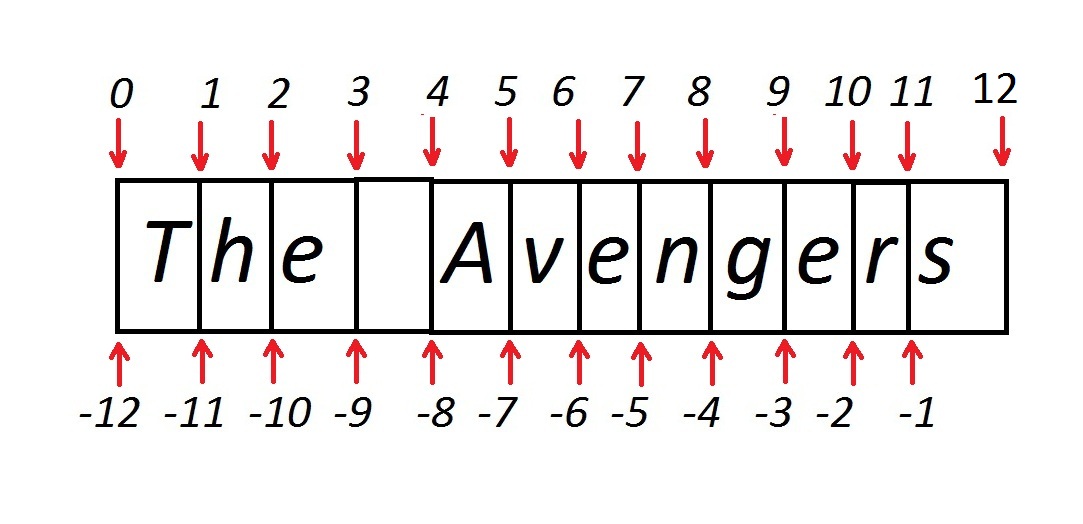In many situations, you might need a particular portion of strings such as the first three characters of the string. Python's subscript operator uses slicing. In slicing, colon : is used. An integer value will appear on either side of the colon. Refer to the following example:
>>>
>>> name[0:3]
'The'
>>> name[:6]
'The Av'
>>> name[4:]
'Avengers'
>>> name[5:9]
'veng'
>>>
>>> name[::2]
'TeAegr'
>>>
Refer to the following diagram to clear your remaining doubts:

String positive and negative slicing
To find the length of a string, you can use the len() function:
>>> len(name) 12 >>>
Now, let's see some useful string methods.



